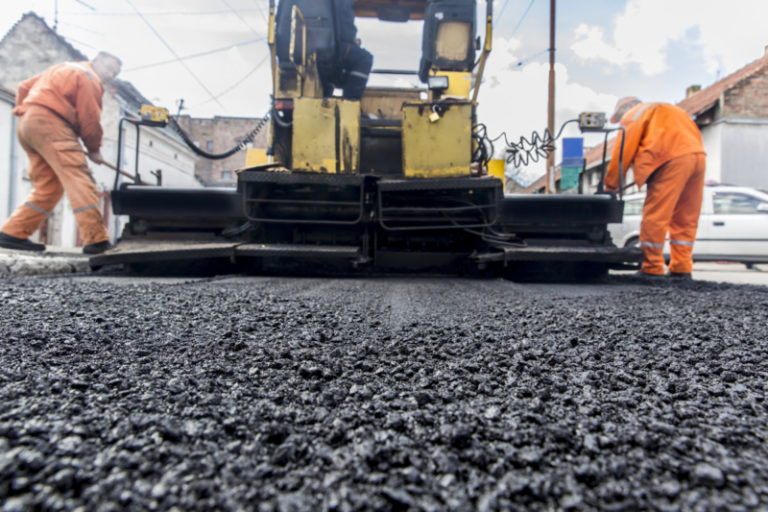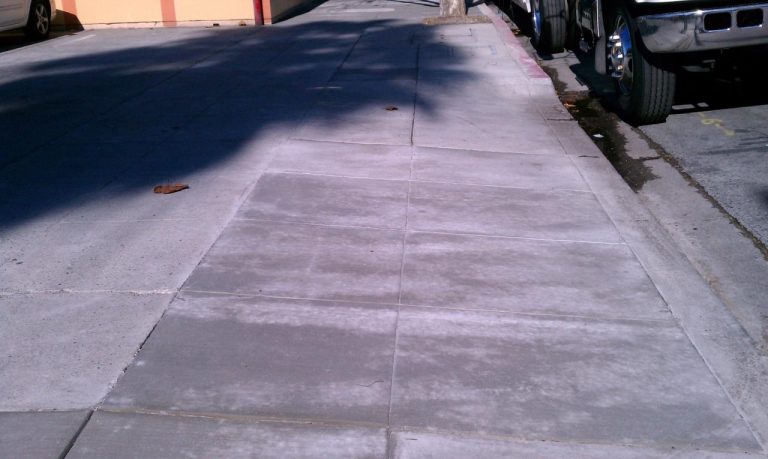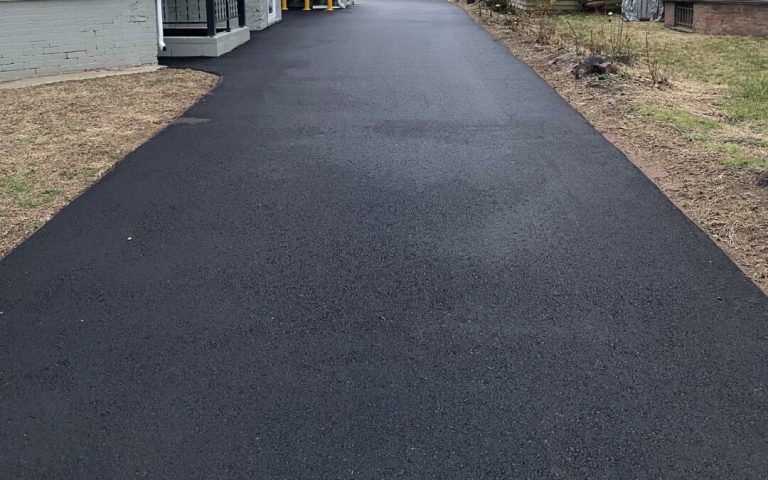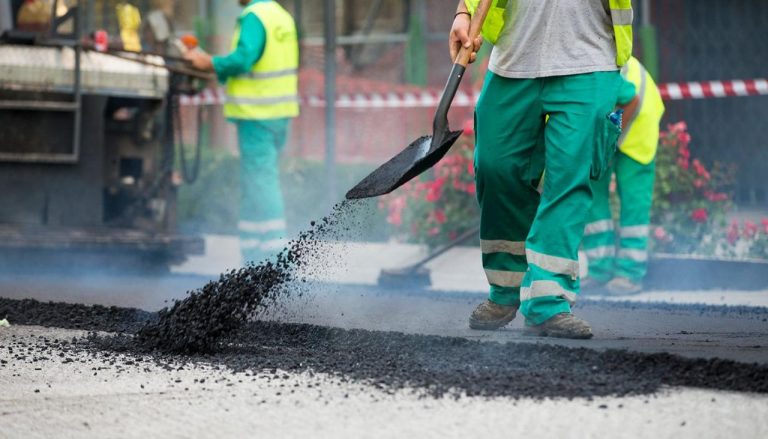Pavers and Turf A Landscape Design Guide
Pavers and turf offer distinct yet complementary options for landscaping. This guide delves into the installation, maintenance, and design considerations of both materials, providing a comprehensive overview of their application.
From meticulous paver installation methods, including dry-laid, mortared, and concrete-bonded techniques, to the intricacies of turf establishment and maintenance, this guide will equip you with the knowledge to create stunning and functional outdoor spaces. It also addresses the crucial design considerations of integrating pavers and turf in a single project, exploring the aesthetic choices, maintenance requirements, and cost-effectiveness of each approach.
Paver Installation Methods
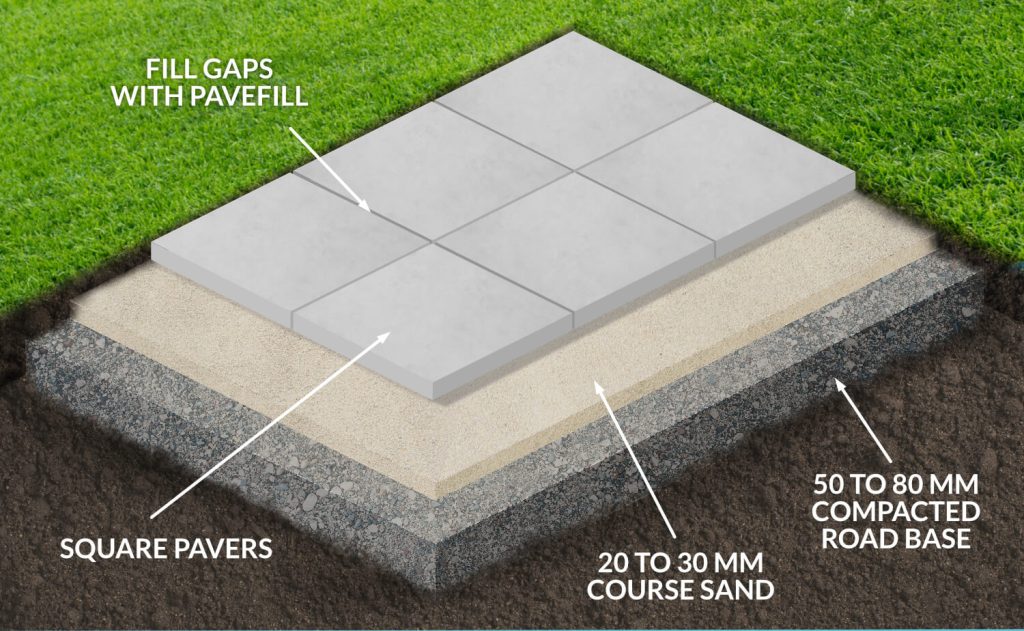
Paver installation is a crucial aspect of creating durable and aesthetically pleasing outdoor spaces. Proper installation ensures longevity and minimizes future maintenance. Different installation methods cater to various project requirements and aesthetic preferences. Understanding the nuances of each method is vital for successful project completion.
Different types of pavers, each with unique characteristics, demand specific installation techniques. Choosing the appropriate method depends on factors like the desired aesthetic, budget, and the specific site conditions. This section delves into the intricacies of paver installation, from preparation to finishing touches.
Dry-laid Paver Installation
Dry-laid paver installation, a popular method, involves placing pavers directly on a prepared base without mortar. This approach is often favored for its speed and relatively lower cost. The method’s success hinges on the quality of the base preparation and the precise alignment of the pavers.
- Preparation: The base layer, typically comprised of compacted gravel or crushed stone, must achieve the required level of compaction to support the weight of the pavers. Proper grading is essential to ensure proper drainage.
- Laying: Pavers are meticulously positioned on the base layer, ensuring they are aligned and level. Adjustments might be necessary to achieve the desired pattern. Using spacers helps maintain uniform gaps between pavers.
- Finishing: After the pavers are laid, the joints are inspected and cleaned. The final step often involves using sand to fill the gaps, ensuring a stable and aesthetically pleasing surface. Thorough compaction of the sand is critical for long-term stability.
Mortar-laid Paver Installation
Mortar-laid installation offers superior structural integrity compared to dry-laid methods. The mortar acts as a binding agent, enhancing the overall stability and resistance to movement. Mortar selection is critical for durability.
- Preparation: Thorough preparation of the base is paramount. A compacted gravel or crushed stone layer is essential for stability. Marking out the paver layout is critical to ensure the desired aesthetic.
- Laying: A layer of mortar is applied to the base, and the pavers are carefully positioned and pressed into the mortar. Precise alignment and leveling are essential to maintain uniformity.
- Finishing: After the mortar has cured, excess mortar is removed from the joints. Joints are then filled with a matching or contrasting colored grout, which, after setting, is swept clean and sealed to protect the surface from weathering.
Concrete-Bonded Paver Installation
Concrete-bonded installation creates a monolithic unit. The pavers are embedded within a concrete slab, providing exceptional strength and durability. This method is suitable for high-traffic areas or applications where strength is paramount.
- Preparation: A comprehensive base preparation is vital. A reinforced concrete slab is poured and leveled, providing a robust foundation for the pavers.
- Laying: The pavers are carefully positioned within the fresh concrete, ensuring they are properly embedded and aligned. The concrete must be properly mixed and poured according to the manufacturer’s instructions.
- Finishing: After the concrete has cured, excess concrete is removed. The pavers are cleaned and inspected to ensure proper integration. This method often involves sealing to protect the concrete and pavers from moisture and staining.
Comparison of Installation Methods
| Installation Method | Materials | Tools | Pros | Cons |
|---|---|---|---|---|
| Dry-laid | Pavers, sand, gravel, spacers | Shovel, tamper, level, spacers | Faster installation, cost-effective | Lower structural integrity, potential for movement |
| Mortar-laid | Pavers, mortar, grout, sealant | Shovel, trowel, level, float, grout float | Higher structural integrity, more aesthetic flexibility | More time-consuming, more expensive |
| Concrete-bonded | Pavers, concrete, reinforcement | Concrete mixer, rebar, forms, level | Exceptional structural integrity, very durable | Highest installation cost, longest installation time |
Potential Issues and Solutions
- Uneven Base: An uneven base can lead to uneven paver placement. Solutions include leveling the base using additional materials and re-compaction.
- Incorrect Paver Alignment: Improper alignment can create an unappealing aesthetic. Solutions involve realigning pavers and adjusting spacers.
- Improper Mortar Mix: Incorrect mortar mix ratios can affect bonding and longevity. Solutions involve adhering to manufacturer specifications and re-mixing.
- Poor Drainage: Poor drainage can lead to water pooling, potentially damaging the pavers and underlying materials. Solutions include proper grading and installation of drainage systems.
Turf Establishment and Maintenance: Pavers And Turf
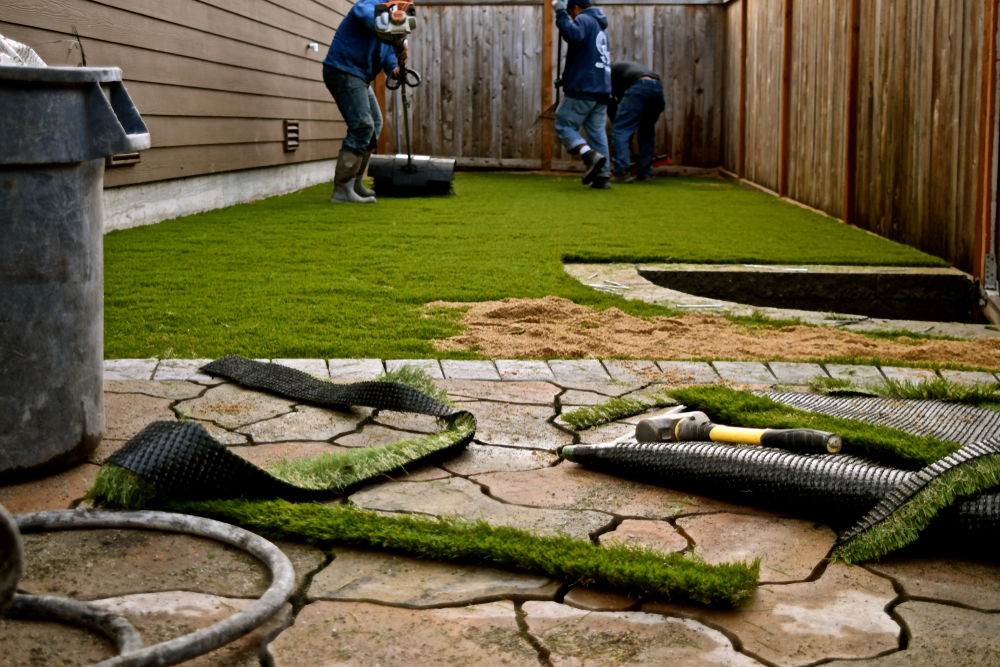
Establishing and maintaining a healthy lawn requires careful planning and consistent effort. Proper soil preparation, selection of appropriate grass types, and consistent maintenance practices are crucial for achieving a vibrant and resilient turf. This section details the key steps for successful turf establishment and upkeep.
Turf establishment goes beyond simply laying down grass; it involves creating an environment where the grass can thrive. Soil conditions, grass type selection, and proper installation methods all play critical roles in achieving a successful and long-lasting lawn. Effective maintenance is equally important, as it ensures the health and aesthetic appeal of the turf throughout the seasons.
Soil Preparation for Turf Installation
Proper soil preparation is fundamental to successful turf establishment. This involves ensuring adequate drainage and creating a well-aerated soil structure conducive to root development. Leveling the soil to a uniform grade is essential for even water distribution and preventing pooling. The soil should be tested to determine its pH and nutrient content. Amendments, such as compost or other organic matter, can be added to improve soil structure and fertility. Proper drainage is crucial to prevent waterlogging, which can lead to root rot and other problems. Consider installing a drainage system if needed.
Turf Grass Selection
Choosing the right turf grass type is vital for achieving a healthy and resilient lawn. Different grasses have varying tolerance levels to different climates and soil conditions. Cool-season grasses, such as Kentucky bluegrass and perennial ryegrass, are better suited for temperate climates, while warm-season grasses, such as Bermuda grass and zoysia grass, thrive in warmer regions. Consider factors like the amount of sunlight, the typical rainfall in your area, and the amount of foot traffic to determine the most suitable type.
Turf Establishment Methods
Turf establishment involves either seeding or sodding. Seeding involves scattering grass seeds over the prepared soil and allowing them to germinate and grow. Sodding involves laying down established sod (turf plugs). Each method has its advantages and disadvantages. Seeding is typically less expensive but takes longer to establish, while sodding provides an immediate, lush lawn but carries a higher initial cost.
Turf Maintenance Practices
Consistent maintenance is key to keeping your turf healthy and vibrant. Watering is essential for establishing healthy root systems and preventing stress. Watering deeply and less frequently promotes deeper root growth compared to frequent shallow watering. Fertilizing provides essential nutrients for healthy grass growth. Use a balanced fertilizer to provide the correct ratios of nitrogen, phosphorus, and potassium. Regular mowing helps maintain a desired height and appearance. Mowing at the appropriate height prevents stress and promotes a healthy lawn.
Comparison of Turf Grass Types
| Grass Type | Growth Habit | Water Needs | Disease Resistance |
|---|---|---|---|
| Kentucky Bluegrass | Dense, fine-textured | Moderate | Moderate |
| Perennial Ryegrass | Dense, medium-textured | Moderate | Good |
| Bermuda Grass | Aggressive, broad-leafed | Low to Moderate | Good |
| Zoysia Grass | Dense, fine-textured | Low | Excellent |
Note: Water needs and disease resistance can vary based on specific cultivars and local conditions.
Preventative Measures for Turf Problems
Implementing preventative measures can significantly reduce the occurrence of common turf problems. Regular inspection of the lawn can identify potential issues early. Proper watering, fertilization, and mowing practices can also help prevent issues. Use of pest control products should follow label instructions carefully to avoid harming beneficial insects. Proper irrigation scheduling is important to avoid issues such as fungus or other diseases.
Pavers vs. Turf
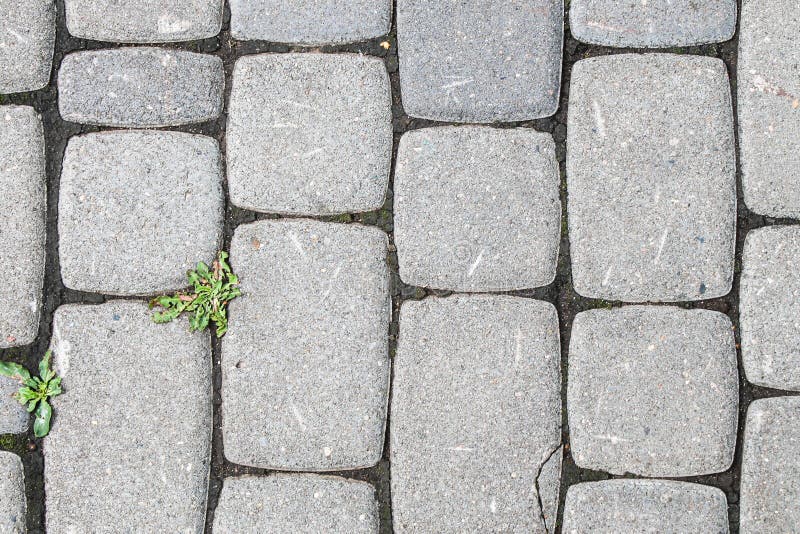
Source: dreamstime.com
Choosing between pavers and turf for landscaping depends heavily on the desired aesthetic, the level of maintenance one is willing to commit to, and the specific application. Both options offer distinct advantages and disadvantages, making careful consideration crucial for a successful project. A well-informed decision leads to a landscape that complements the home or business while minimizing long-term costs.
Landscaping projects often involve a trade-off between aesthetics, maintenance, and budget. Pavers offer a more structured, often visually appealing, design, while turf provides a natural, low-maintenance alternative. The best choice depends on the specific needs and preferences of the homeowner or business owner.
Aesthetic Considerations
Pavers and turf present contrasting aesthetic options. Pavers provide a strong visual statement with various colors, textures, and patterns, which can create a formal or informal look depending on the design. Turf, conversely, offers a natural, soft appearance that integrates seamlessly into a more organic design. Different landscaping designs call for different aesthetic approaches.
Maintenance Requirements
Pavers generally require less frequent maintenance compared to turf. Paver cleaning involves occasional sweeping or pressure washing, while turf demands regular mowing, fertilization, and weed control. This difference directly impacts the time and cost associated with maintaining the landscape.
Paver Applications
Pavers excel in applications demanding durability and visual appeal, such as driveways, patios, and walkways. Their ability to withstand foot traffic and weather conditions makes them suitable for high-traffic areas. However, pavers may not be ideal for all areas, particularly those requiring a natural, soft feel.
- Driveways: Pavers offer durability and aesthetic appeal for driveways, enhancing curb appeal and withstanding vehicle traffic. They are more resilient to damage from heavy use compared to turf.
- Patios: Pavers create inviting and durable outdoor spaces for relaxation. They can be customized with various patterns and colors, creating unique and personalized outdoor living areas.
- Walkways: Pavers offer a visually appealing and durable alternative to traditional walkways. They can enhance the overall design of the landscape while being resistant to weathering.
Combining Pavers and Turf
Combining pavers and turf in a single project offers flexibility to integrate various design elements. For example, pavers can define walkways, patios, and driveways, while turf areas can provide visual interest and a natural aesthetic. This combination is common for residential and commercial landscaping.
Cost-Effectiveness Comparison
The initial cost of pavers is often higher than turf, but the long-term maintenance costs for turf can be considerable. Regular mowing, fertilization, and weed control contribute significantly to the total cost of ownership over time. A comparison table can provide a clear picture of the long-term cost implications of each choice.
| Feature | Pavers | Turf |
|---|---|---|
| Initial Cost | Higher | Lower |
| Long-Term Maintenance | Lower (occasional cleaning) | Higher (mowing, fertilization, weed control) |
| Durability | High | Moderate |
| Aesthetics | Versatile, formal | Natural, informal |
Landscaping Examples, Pavers, and turf
Numerous residential and commercial landscapes showcase the use of pavers and turf. A modern residential home might incorporate paver patios and walkways with surrounding turf areas for a visually appealing and practical outdoor space. Commercial spaces, such as shopping centers or office buildings, may use pavers for walkways and driveways, contrasting with landscaped turf areas. These examples illustrate the versatility of both materials.
Final Review

In conclusion, this exploration of pavers and turf reveals a wealth of design possibilities and practical considerations for creating beautiful and enduring landscapes. Understanding the nuances of installation, maintenance, and aesthetic choices allows homeowners and landscapers to make informed decisions, ultimately achieving their desired outdoor spaces. Whether prioritizing the durability of pavers or the vibrant green expanse of turf, this guide provides the necessary insights for a successful project.
